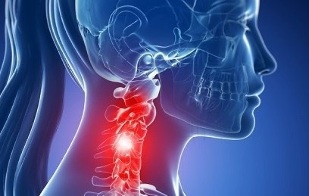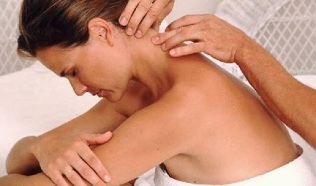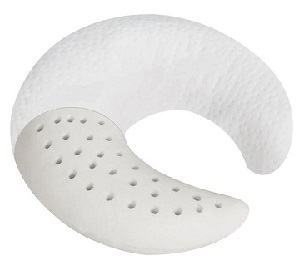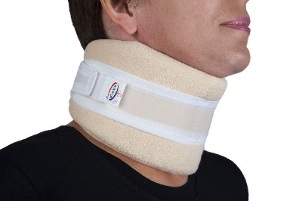
Osteochondrosis is a lesion of the intervertebral discs of a degenerative-dystrophic nature, and the cervical region is the most vulnerable part of the spine, which has an anatomically different structure from vertebrae that are very close to each otherand a weak muscle corset. Therefore, even with small additional loads on the neck, displacement of the vertebrae can occur, causing compression of blood vessels and nerves.
And as the vertebral arteries involved in the blood supply to the brain pass through the transverse process holes of the vertebrae in this section, pinching the vertebrae in this section or squeezing the holes by overgrown osteophytes has consequencesvery serious.
What is this?
Osteochondrosis of the cervical spine is a progressive polyetiologic disease manifested by degeneration of the intervertebral discs and degeneration of the ligamentous apparatus of the spine.
Reasons for
The main causes and prerequisites for the onset of osteochondrosis of the cervical vertebra are:
- Curvature of the spine, scoliosis.
- Stress, nervous tension negatively affect the general condition of the body, can cause cervical osteochondrosis.
- Past infectious diseases often become the root cause.
- Incorrect and uncomfortable body position while sleeping (e. g. uncomfortable pillow).
- Congenital problems or the presence of hereditary diseases of the cervical spine.
- Poor posture in youth and adolescence.
- Overweight, obesity to varying degrees. Extra pounds increase the load on the vertebrae and discs, which leads to degenerative processes.
- Back injuries that may have occurred during childhood or adolescence.
- Disruption of metabolic processes.
- Work related to physical labor, which can cause diseases of the spine in its various parts.
- Inactive lifestyle, sedentary work, inappropriate exercise.
For successful treatment of cervical osteochondrosis, it is first necessary to establish the cause of the event, the prerequisites that provoked its development and eliminate them. Until recently, the disease only affected people over 45 years old. Now young people are exposed to it, the age range is 18-25.
Characteristics of the cervical spine
Consider how the cervical spine differs from the rest of the spine, and that during the development of osteochondrosis is a prerequisite for the development of these syndromes.
- In the cervical region are important ganglia (nodes) of the autonomic nervous system.
- In the transverse processes of the vertebrae there are holes that form a channel through which the vertebral artery passes, which supplies oxygen and nutrients to the brain, cerebellum, auditory organs, as well asto the vertebral nerve. These are prerequisites for frequent artery and nerve clamping.
- The cervical spine is the most mobile. It is characterized by all types of movements in their entirety. These are prerequisites for frequent infractions and subluxations.
- The intervertebral foramen of the three lower vertebrae is not round, but triangular. These are prerequisites for the pinching of the nerve roots by bone growths that form during osteochondrosis.
- The intervertebral discs are not located between the vertebral bodies along their entire length. In the front part, instead of them, there are protruding edges of the vertebrae, which are connected by joints. These are prerequisites for the occurrence of joint subluxation.
Development stages
The degree of osteochondrosis is determined by the clinical picture and the patient's complaints. The concept of degree should not be confused with the stages of osteochondrosis. The steps are outlined below.
- First degree. The clinical manifestations are minimal, the patient may complain of mild neck pain, which may worsen when turning the head. Physical examination may show slight muscle tension in the neck.
- Second degree. The patient is worried about the pain in the cervical spine, its intensity is much greater, there may be irradiation to the shoulder, arm. This is due to a decrease in the height of the intervertebral disc and pinching of the nerve roots. Painful sensations increase when tilting and rotating the head. The patient may notice decreased performance, weakness, headache.
- Third degree. Symptoms of cervical osteochondrosis intensify, the pain becomes constant with irradiation of the arm or shoulder. Numbness or weakness appears in the muscles of the arm, in the form of a herniated intervertebral disc. Worried about weakness, dizziness. Examination reveals limited mobility of the cervical spine, pain on palpation of the cervical spine.
- The fourth degree. There is a complete destruction of the intervertebral disc and its replacement with connective tissue. Dizziness increases, tinnitus appears, impaired coordination, as the process involves the vertebral artery that supplies the cerebellum and the occipital lobe of the brain.
Symptoms
The severity of symptoms of cervical osteochondrosis depends on the degree of destruction of the vertebral structures. Symptoms are aggravated by growth of bone tissue with formation of osteophytes, radicular syndrome (radicular pain when a nerve is pinched), intervertebral hernia (protrusion of the disc into the spinal canal).
The first signs of the disease are periodic headaches in the occiput, pain in the neck, crackles and clicks in the vertebrae when turning the head, sometimes a slight tingling sensation in theshoulders. Over time, symptoms increase and the intensity of pain increases.
Pain syndrome is the main manifestation of osteochondrosis. Neck pain is either dull, constant, or sharp with lumbago under the occiput when you turn your head. The entire cervical region or projection area of the altered vertebra, as well as the collarbone, shoulder, scapula, and heart area, can hurt. Irradiation of pain in the lower jaw, teeth, arm, ear, eye area is not excluded. The muscles of the neck and shoulders are tense, painful on palpation. Difficulty raising the arm from the side of the lesion - there is immediately lumbago in the shoulder or neck. Restriction of head movement due to pain often occurs in the morning after sleeping in an awkward position.
The disease causes compression of the roots of the peripheral nerves (radicular syndrome) and causes pain over these nerves. Perhaps numbness in the hands or fingers, altered sensitivity of certain areas of the skin innervated by the pinched nerve.
Some characteristic symptoms suggest which vertebrae are affected:
- C1 - altered tenderness in the occipital region;
- C2 - pain in the occipital and parietal regions;
- C3 - decreased tenderness and pain in the half of the neck where the spinal nerve has been involved, possibly altered sensitivity of the tongue, impaired speech due to loss of control of the tongue;
- C4 - altered sensitivity and pain in the shoulder-scapular region, decreased tone of the muscles of the head and neck, possible respiratory disturbances, pain in the liver and heart;
- C5 - pain and sensory disturbance of the outer surface of the shoulder;
- C6 - pain extending from neck to scapula, forearm, outer side of shoulder, radial side of forearm to thumb;
- C7 - pain extending from neck to scapula, back of shoulder, forearm to fingers II - IV of hand, altered tenderness in this area.
- C8 - Pain and sensory disturbances spread from the neck to the shoulder, from the forearm to the little finger.
Cervical osteochondrosis is always accompanied by a headache. Severe, persistent pain is aggravated by neck rotation or sudden movements. Some patients complain of heaviness in the head. Compression of the vertebral artery causes dizziness, nausea. There is noise, ringing in the ears, flickering black dots in front of the eyes. The deterioration of cerebral circulation causes a gradual decrease in hearing and visual acuity, numbness of the tongue and changes in taste.
Clicks or crackles during neck movements almost always accompany cervical osteochondrosis, seen in every patient. The crunch appears when turning the head sharply or throwing it back.
Syndromes due to cervical osteochondrosis
Symptoms of cervical osteochondrosis are grouped into specific groups called syndromes. Their presence and severity may indicate pathology of the cervical spine with a specified localization.
A group of common syndromes:
- Vegetative-dystonic syndrome. Subluxation of the first cervical vertebra with displacement can lead to the development of vegetative-vascular dystonia. VSD is not a definitive diagnosis because it does not present with pronounced symptoms. There may be neurological signs, symptoms of impaired cerebral blood flow, spikes in intracranial pressure, muscle spasms. As a result, the patient's complaints are reduced to dizziness, decreased visual acuity, loss of consciousness, headache, nausea.
- Irritating - reflexive. Searing, burning pain in the back of the head and neck, sometimes with a sagging back to the chest and shoulder, occurring with a change in the position of the head and neck, with sneezing and a sharp turnof the head.
- Root canal. Otherwise called cervical radiculitis, it combines symptoms associated with damage to the nerve roots of the cervical vertebrae. Characterized by "chills" in the affected area, tingling in the fingers, forearms, pasty skin, extending to some fingers.
- Heart. Almost the same picture with angina often leads to incorrect diagnosis and treatment. The syndrome appears due to irritation of the receptors of the phrenic nerve, partly involving the pericardium and the pectoralis major muscle. Thus, spasms in the heart are more reflective, as a response to irritation of the cervical nerves.
- Vertebral artery syndrome. It develops directly both with the compression of the artery itself, and with irritation of the sympathetic nerve plexus, which is located around it. The pain in this pathology is burning or throbbing in the occipital region with spread to the temples, eyebrow arches, crown. Occurs on both one side and both sides. Patients usually associate the exacerbation with the condition after sleeping in a non-physiological position, traveling in transport, walking. With severe symptoms, hearing loss, dizziness, tinnitus, nausea, vomiting, loss of consciousness, increased blood pressure are possible.
Diagnostics
Like any diagnosis in medicine, the diagnosis of osteochondrosis is made on the basis of patient complaints, medical history, clinical examination and ancillary research methods. X-ray of the cervical spine is performed in frontal and lateral projections, if necessary in special positions (with the mouth open). At the same time, specialists are interested in the height of the intervertebral discs, the presence of osteophytes.
Among modern research methods, NMR and CT studies are used, which allow the most accurate verification of the diagnosis. In addition to the additional research methods listed, you may need to consult relevant specialists (cardiologist, ophthalmologist, neurosurgeon), and examination by a neurologist is simply vital. A neurologist is engaged in the treatment of osteochondrosis, therefore, after examining the patient, he will, at his discretion, prescribe the minimum necessary examination.
How to treat osteochondrosis of the cervical spine?
The complex treatment of cervical osteochondrosis can include the following traditional and non-traditional methods: drug treatment, massage, acupressure, manual therapy, physiotherapy, acupuncture, homeopathy, folk remedies, etc.
The main treatment regimen for osteochondrosis is the same for all locations of this disease:
- You need to relieve the pain first.
- Then the swelling is relieved.
- At this point it is necessary to normalize the blood circulation.
- Strengthening the muscle corset.
- Improved nutrition and tissue regeneration.
The list of drugs and drugs for the treatment of cervical osteochondrosis at home is very long:
- Anti-inflammatory (steroid). These are hormonal drugs that relieve inflammation and thus eliminate pain;
- Analgesics (nonsteroidal medicines that relieve pain). They are usually prescribed as tablets or capsules. It should be remembered that most of these drugs cause irritation of the mucous membrane of the digestive tract;
- Muscle relaxants are drugs that relax muscle tone. They are used in surgery and orthopedics to relieve pain. These drugs are administered parenterally and are therefore always under medical supervision. There is a long list of contraindications;
- Chondroprotectors are drugs containing substances that replace components of cartilage tissue. To achieve a lasting positive effect, these drugs should be taken for a very long time;
- Ointments and gels for external use. This is the most accessible group of drugs at home. They are divided into relieving inflammation, warming and pain relievers. These funds are often advertised. With cervical osteochondrosis, not all ointments are effective. In addition, due to their availability, they are sometimes used unreasonably and without taking into account the peculiarities of pathogenesis.
- Vitamins. With osteochondrosis, vitamins are prescribed, which have a beneficial effect on the peripheral nervous system and improve conductivity. Water-soluble vitamins: B1, B6, B12, fat-soluble vitamins: A, C, D, E. In recent years, combined preparations containing both pain relievers and vitamins have become more often prescribed.

Only a team of good specialists can select the most suitable therapy, which includes a neurologist, physiotherapist, massage therapist, surgeon, and spinal neurologist.
Physiotherapy
Exercise therapy for cervical osteochondrosis should be performed outside of an acute exacerbation. The greatest effectiveness of this technique is during the recovery period. There should be no discomfort or pain while running the complex!
- Exercise # 1. Lying on your stomach, put your hands on the floor, raise your head and torso, your back should be straight. Stay in this position for 1 to 2 minutes. Slowly lower yourself to the ground. Repeat 2-3 times.
- Exercise # 2. Lying on your stomach, stretch your arms alongside your body, turn your head to the left, try to touch the floor with your ear, then turn your head to the right. Repeat 6-7 times in each direction.
- Exercise # 3. In a sitting position, while inhaling, lean forward and try to touch your chest with your head, then exhale, lean back and tilt your head back. Repeat 10 to 15 times.
- Exercise # 4. While seated, place your palms on your forehead, apply pressure with your palms to your forehead and your forehead to your palms. Continue this exercise for 30 seconds. Repeat 2-3 times.
- Exercise # 5. Slowly turn your head first in one direction, then in the other direction. 10 rotations in each direction. Watch for dizziness. When it appears, the exercise stops.
Massage therapy
Massage can be done at home, but with great care not to aggravate and harm the patient. The patient should take a supine position, put the forehead on the hands and stretch the chin to the chest. The neck muscles should be completely relaxed.
- Stroking. It is necessary to start the massage with these movements: caress the area of the neck in the direction of the lymph to the supraclavicular and axillary nodes. Then flat strokes and combs are applied.
- Pushups. To perform push-ups, the masseur places one hand on the neck (index and thumb should be together) and moves down the spine. Push-ups can also be done with the edge of the palm up to the shoulder joints.
- Friction. Rubbing is done to warm muscles, relax them, and improve blood flow to the area. The massage should be started from the base of the skull, making circular and rectilinear movements with your fingers. You can also perform sawing motions with the palms parallel to the ribs.
- Kneading. The neck should be kneaded in a circular motion.
- Vibration. The massage ends with blows and vibrations, which are performed with jerks and tapping.

Massage is necessary to strengthen muscle tone and relieve pain. Depending on the stage of osteochondrosis, a massage technique is chosen. However, when massaging the neck, specialists use all the techniques of classic massage: rubbing, stroking, kneading, etc. In cases where the patient feels pain on one side only, the massage begins in the healthy part of the neck, gradually moving to the part of the neck area where painful sensations occur.
Manual therapy
Manual therapy helps to cope with acute and chronic pain, it also increases range of motion and improves posture well. The main methods of manual therapy for osteochondrosis of the cervical spine:
- Relaxing and segmental massage. It is used to warm up muscles and relieve tension.
- Mobilization. Influences aimed at restoring joint function by traction.
- Manipulation. A strong push directed towards the pathological areas of the patient. The intervention is accompanied by a characteristic crunch (return of the joint to its normal position).
The chiropractic practitioner must master these techniques. Otherwise, any mistake could result in injury.

Orthopedic pillows
Orthopedic pillows are an effective prevention tool. In many cases, osteochondrosis is made worse by additional compression of the cervical artery and nerve roots while sleeping on an uncomfortable pillow. The orthopedic product ensures a uniform horizontal position of a person during sleep and thus guarantees a physiologically adequate blood supply to the brain.
When choosing a pillow, one should take into account the individual anatomical characteristics of a person and correlate them with the volume and characteristics of the filler. A properly selected pillow brings tangible benefits to a patient with osteochondrosis of the cervical spine.
Physiotherapy
Physiotherapy procedures for osteochondrosis of the cervical spine:
- Electrophoresis. It should be used with pain relievers (anesthetics), which are injected under the skin by means of electronic pulses.
- Ultrasound. It has a beneficial effect on metabolic processes in the tissues of the cervical spine, thanks to which the swelling is removed, the pain disappears.
- Magnetotherapy. A safe method of treatment, which involves exposing damaged cells to a low frequency magnetic field. It has analgesic effect, acts as an anti-inflammatory agent.
- Laser therapy. Improves blood circulation in the affected area, relieves tissue swelling, pain.
Physiotherapy procedures have a beneficial effect on the discs and vertebrae in cervical osteochondrosis. In combination with taking medication, the combination therapy helps to get rid of the symptoms of the disease. The procedures are carried out in a hospital or in specialized rooms of polyclinics. Before starting the course, you need to consult a doctor, determine the duration of physiotherapy, types. It is strictly forbidden to pass it during an exacerbation.

Trench Necklace
The Shants Collar is a soft and comfortable device, attached with Velcro on the back and used for cervical osteochondrosis. But not for treatment, but for temporary relaxation and relieve fatigue. It cannot be worn without removing it, otherwise the neck muscles will stop working and soon atrophy. If the Shants collar is chosen correctly, the patient will feel comfortable and protected.
The collar is selected strictly according to the size in pharmacies or orthopedic stores. Better in a store, as the people who work there are usually familiar with their business and the features of the product, which means they can help in any specific case.
Folk remedies
If the pain of osteochondrosis of the spine becomes unbearable and regular, then you will agree to anything to stop it, and here the traditional complex treatment will be successfully supplemented with alternative methods.
- insist on celery root (5 grams per 1 liter of boiling water) for 4 hours, drink a tablespoon before each meal;
- compress of honey, for which we take 2 tbsp. honey and 1 mummy tablet. We heat the components in a water bath, calibrate them on a cloth and apply them to the cervical region, that is, the neck, at night;
- in acute pain, growing horseradish in the country helps me. I just wash its sheet, pour it with boiling water, cool it a little, apply it to the neck and wrap it with a thin scarf for the night - in the morning you can already live and work;
- we insist on chamomile flowers in vegetable oil for two days, preheat to a boil (for 500 ml of oil you need 30 grams of a plant), rub into the painful areas;
- honey-potato compress also helps, for this the root vegetable should be grated and mixed with honey in the same amount, applied to a sore neck at night, used regularly, at least once a week. x / li>
Prevention
As usual, proper prophylaxis will help prevent cervical osteochondrosis, but, of course, all physical exercise should be done regularly, otherwise "periodic" exercises will hardly benefit.
There are simple rules to remember:
- Eat plenty of calcium and magnesium. These are fish, peas, legumes, nuts, cheese, herbs, but it is better to refrain from sugar, flour, smoked, spicy.
- regular exercise including swimming, water aerobics, gymnastics for stretching and flexibility of the vertebrae is also suitable for preventing osteochondrosis, which can be done at home.
- If you are sedentary, perform a series of special exercises at least twice a day.
- choose a good orthopedic mattress and a perfect neck pillow, supporting the head in the correct anatomical position while sleeping (yes, your favorite huge down pillows won't go away with spinal problems! )
If you already have such a diagnosis, the patient should take care of his spine, namely:
- Be very careful when lifting and carrying weights, better to go to the store twice than to pull heavy bags with two hands which makes your neck and shoulder girdle stretch incredibly;
- Do not overcool, avoid drafts and cold air flow from the air conditioner (some people like to cool off on a hot day, standing with their back to the fan);
- When you bend the trunk forward - remember osteochondrosis;
- Avoid local overheating of muscles, which can occur in baths that are too hot;
- Remember to periodically step away from the monitor, change your body position, not sit still for hours or even days;
- Rest your neck by purchasing a Shants necklace;
- If possible, if the condition of the cardiovascular system allows it, take a steam bath.
In conclusion, I would like to say that a child who is at risk of osteochondrosis (the father and mother already have it) and an adult who contracted the disease during his life are simply forced to takepreventive measures so as not to become disabled and not end up on the operating table, After all, this operation is quite complicated and requires long-term rehabilitation. In addition, this is not always possible, since there are inoperable cases, so it is better to protect your health from an early age, as long as the discs are intact and unnecessary growths do not squeeze the blood vessels. .





































